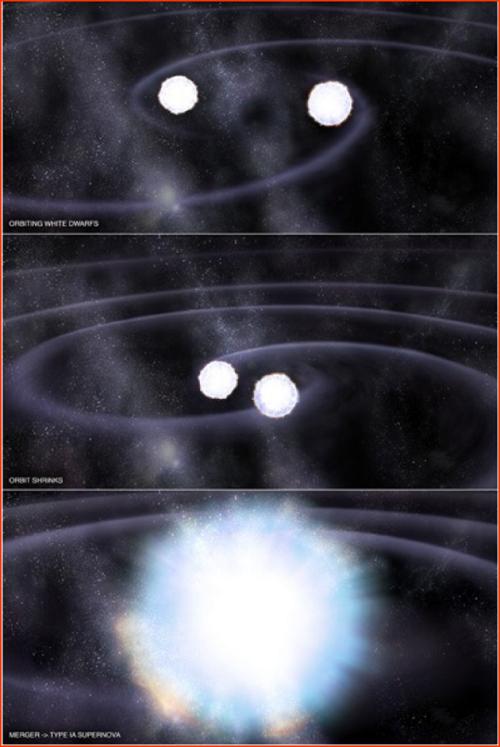
In a recent study published in Monthly Notices of the Royal Astronomical Society, WU Chengyuan et al. from the Yunnan Observatories of Chinese Academy of Sciences reported that the outcomes of double white dwarf (WD) mergers significantly rely on the mass-accretion rate during the merging process.
By acting as standard candles, Type Ia supernovae (SNe Ia) have revealed the acceleration of the expansion of the Universe, which indicates the existence of dark energy. The double degenerate model is one of two popular progenitor models of SNe Ia, and also, it is a potential source of gravitational waves.
Previous studies suggested that the outcome of the WD may be collapsing to a neutron star through the e-capture supernova explosion other than exploding as an SN Ia. Hence, the final outcomes of double WD mergers still remain uncertain.
In this study, researchers found that the mass-accretion rate during the merger process is a key parameter for the final outcomes of WDs. According to the different accretion rates, the merged WD could produce type Ia supernova under particular circumstances, which improves the reliability of double degenerate model.
Besides, the outcomes of double carbon oxygen white dwarf (CO WD) mergers could also be the objects or phenomena like oxygen-silicon WD (subsequently evolves to an iron-core-collapse SN), oxygen-neon WD (subsequently evolves to an e-capture SN), off-center oxygen/neon ignition (subsequently evolves to a particular kind of thermonuclear supernovae).
In conclusion, the results indicated the diversity of outcomes of double WD mergers.

Image of double WD merger (Image by NASA)

86-10-68597521 (day)
86-10-68597289 (night)

52 Sanlihe Rd., Xicheng District,
Beijing, China (100864)

